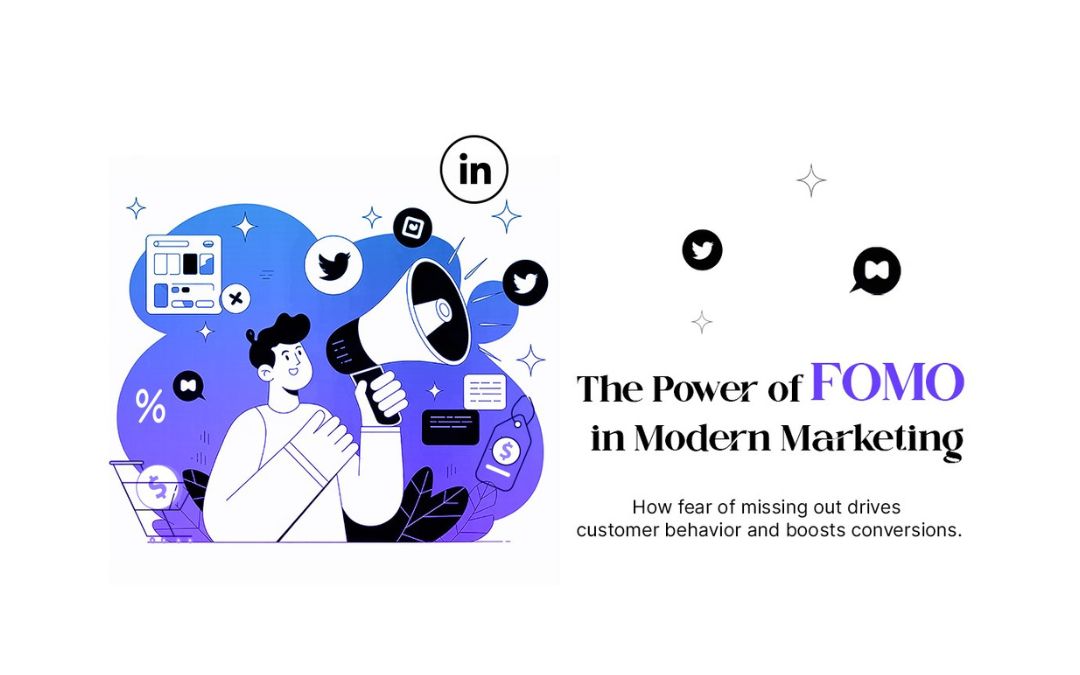Every day, consumers are exposed to countless offers, ads, and online campaigns. With so many options available, it is easy to postpone a decision or think, “I’ll come back later.”
However, smart brands know how to flip that hesitation into action by using one of the strongest psychological triggers in marketing: FOMO – the Fear of Missing Out.
When customers feel that an opportunity might disappear, whether it’s a discount, a trending product, or limited stock, they tend to move faster.
This is why FOMO is no longer just a trend but has become a cornerstone of modern marketing strategies.
What is FOMO in Marketing?
FOMO is the anxious feeling that others are experiencing something valuable while you are not.
In business terms, it is the art of creating urgency and exclusivity so that customers feel compelled to act immediately. For instance, phrases such as “Only 2 left in stock,” “Offer ends at midnight,” or “Be the first to get access” are simple but very effective tools to transform interest into action.
Why FOMO Works So Effectively
First, the scarcity principle shows that when supply is limited, value automatically increases. Second, social proof demonstrates that people are strongly influenced by what others are doing or buying. Third, urgency accelerates the decision-making process, because deadlines reduce hesitation. Finally, exclusivity makes customers feel special and privileged, which amplifies the appeal of the product or service.
Brands That Successfully Used FOMO to Boost Sales
One clear example is LaBobo, an Egyptian streetwear brand that built hype through limited collections and flash sales. By announcing exclusive drops with very restricted quantities, the brand pushed fans to purchase instantly, often selling out items within just hours.
In the global market, Supreme is perhaps the most famous case. The brand created the culture of weekly “drops,” releasing extremely limited products that sell out in minutes and fuel a lucrative resale market.
Similarly, Nike leverages FOMO through its SNKRS app, where countdowns and exclusive access keep fans engaged and competing for limited sneaker releases.
In the hospitality sector, Booking.com uses real-time notifications such as “5 people are viewing this property” or “Only 1 room left at this price.” These messages transform browsing into quick bookings.
Meanwhile, Amazon takes advantage of big shopping events like Prime Day or Black Friday, where countdown timers and “percentage claimed” trackers create urgency and push customers to act immediately.
How FOMO Boosts Conversions
Because FOMO creates urgency, it reduces hesitation and encourages quick decisions. Instead of spending hours comparing alternatives, customers are motivated to act on the spot. As a result, businesses experience higher engagement with promotional campaigns, faster checkout during flash promotions, and more sign-ups when access feels exclusive. Furthermore, FOMO fosters loyalty because customers feel that they are part of something rare and valuable.
Best Practices for FOMO Marketing
To use FOMO effectively, marketers need to follow best practices. They should always keep it authentic, since faking scarcity damages trust. They should also highlight genuine social proof, such as customer reviews, influencer collaborations, or user-generated content. Time pressure works best when it is transparent, so countdowns and limited-time bundles should be real and clearly communicated. Moreover, building exclusivity through VIP access, early-bird deals, or private events strengthens brand-customer relationships. Above all, urgency must be balanced with real value so that customers feel rewarded, not pressured.
Finally, FOMO has proven to be one of the most powerful marketing tools. It creates urgency, builds exclusivity, and motivates customers to act quickly. Brands that use it wisely enjoy stronger sales, deeper engagement, and lasting loyalty.
Follow IZDAHER to learn marketing the right way and stay ahead with strategies that truly work.


